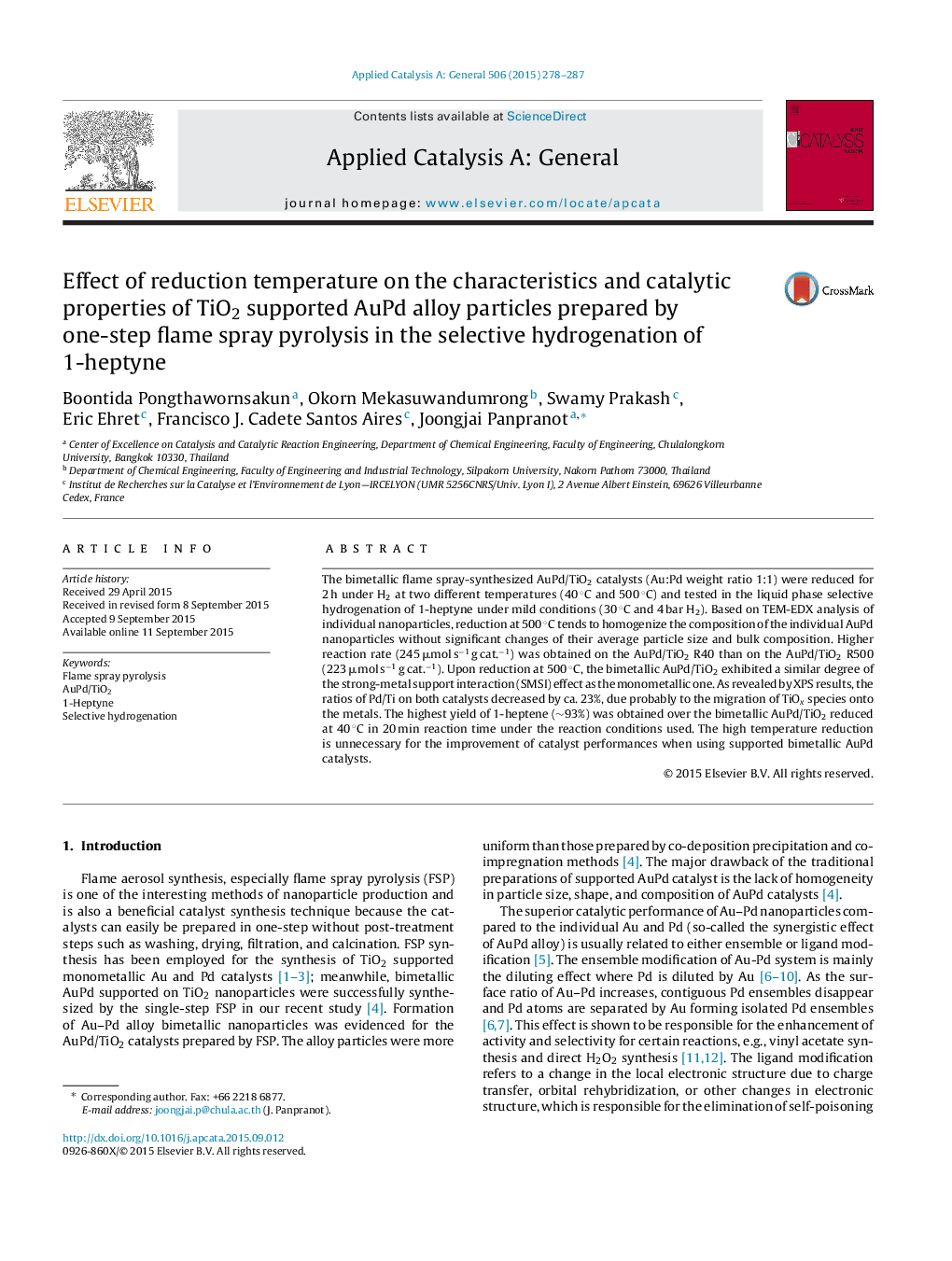| Article ID | Journal | Published Year | Pages | File Type |
|---|---|---|---|---|
| 39068 | Applied Catalysis A: General | 2015 | 10 Pages |
•AuPd/TiO2 were synthesized by one-step FSP method and reduced at 40 and 500 °C.•The nanoparticles were AuPd alloy for both FSP-AuPd/TiO2 R40 and R500.•Reduction at 500 °C homogenize the composition of individual AuPd nanoparticles.•Higher reaction rate was obtained on AuPd/TiO2 R40 than on AuPd/TiO2 R500.•The highest yield of 1-heptene was 93% on AuPd/TiO2 R40.
The bimetallic flame spray-synthesized AuPd/TiO2 catalysts (Au:Pd weight ratio 1:1) were reduced for 2 h under H2 at two different temperatures (40 °C and 500 °C) and tested in the liquid phase selective hydrogenation of 1-heptyne under mild conditions (30 °C and 4 bar H2). Based on TEM-EDX analysis of individual nanoparticles, reduction at 500 °C tends to homogenize the composition of the individual AuPd nanoparticles without significant changes of their average particle size and bulk composition. Higher reaction rate (245 μmol s−1 g cat.−1) was obtained on the AuPd/TiO2 R40 than on the AuPd/TiO2 R500 (223 μmol s−1 g cat.−1). Upon reduction at 500 °C, the bimetallic AuPd/TiO2 exhibited a similar degree of the strong-metal support interaction (SMSI) effect as the monometallic one. As revealed by XPS results, the ratios of Pd/Ti on both catalysts decreased by ca. 23%, due probably to the migration of TiOx species onto the metals. The highest yield of 1-heptene (∼93%) was obtained over the bimetallic AuPd/TiO2 reduced at 40 °C in 20 min reaction time under the reaction conditions used. The high temperature reduction is unnecessary for the improvement of catalyst performances when using supported bimetallic AuPd catalysts.
Graphical abstractFigure optionsDownload full-size imageDownload high-quality image (169 K)Download as PowerPoint slide
